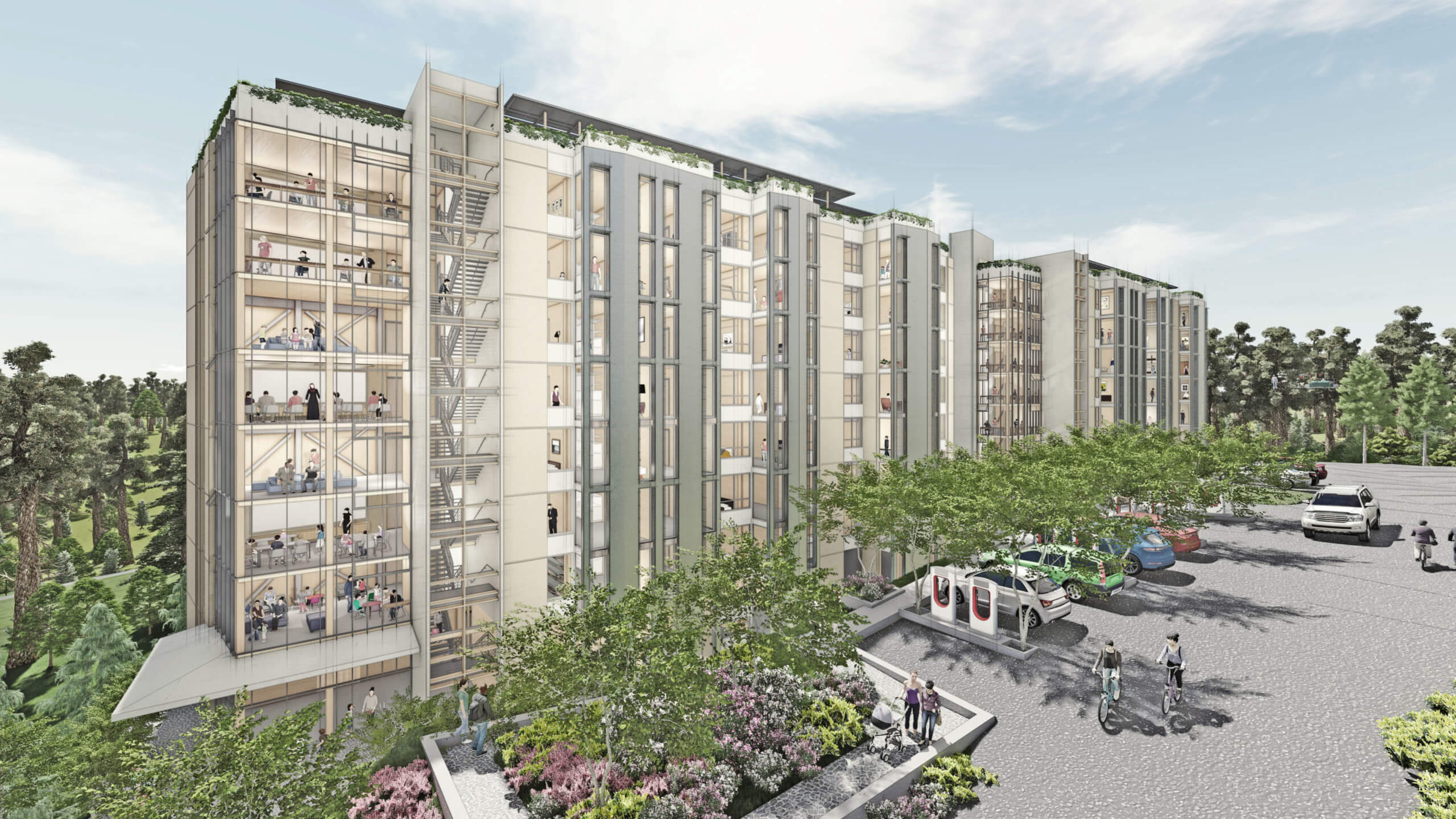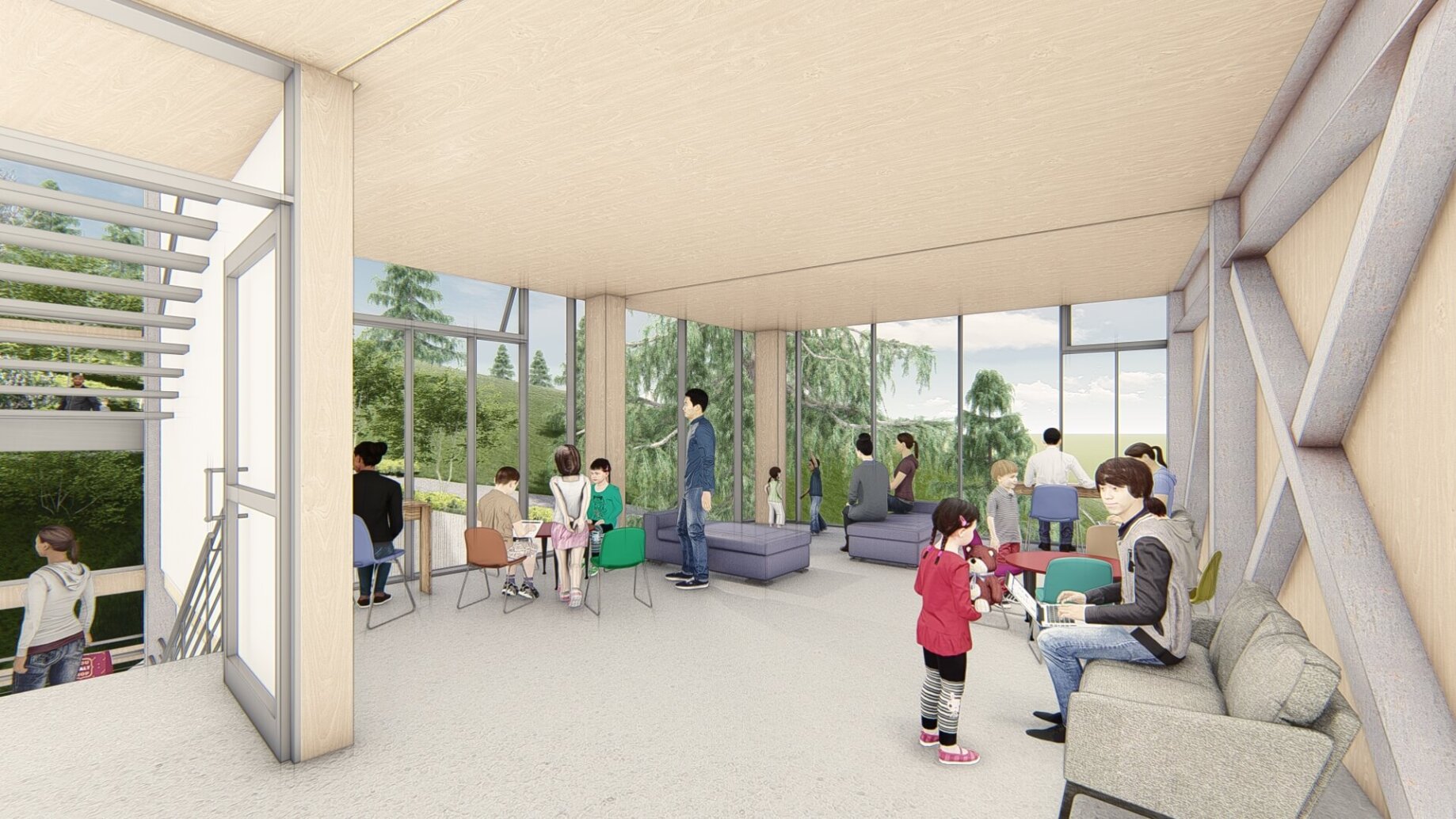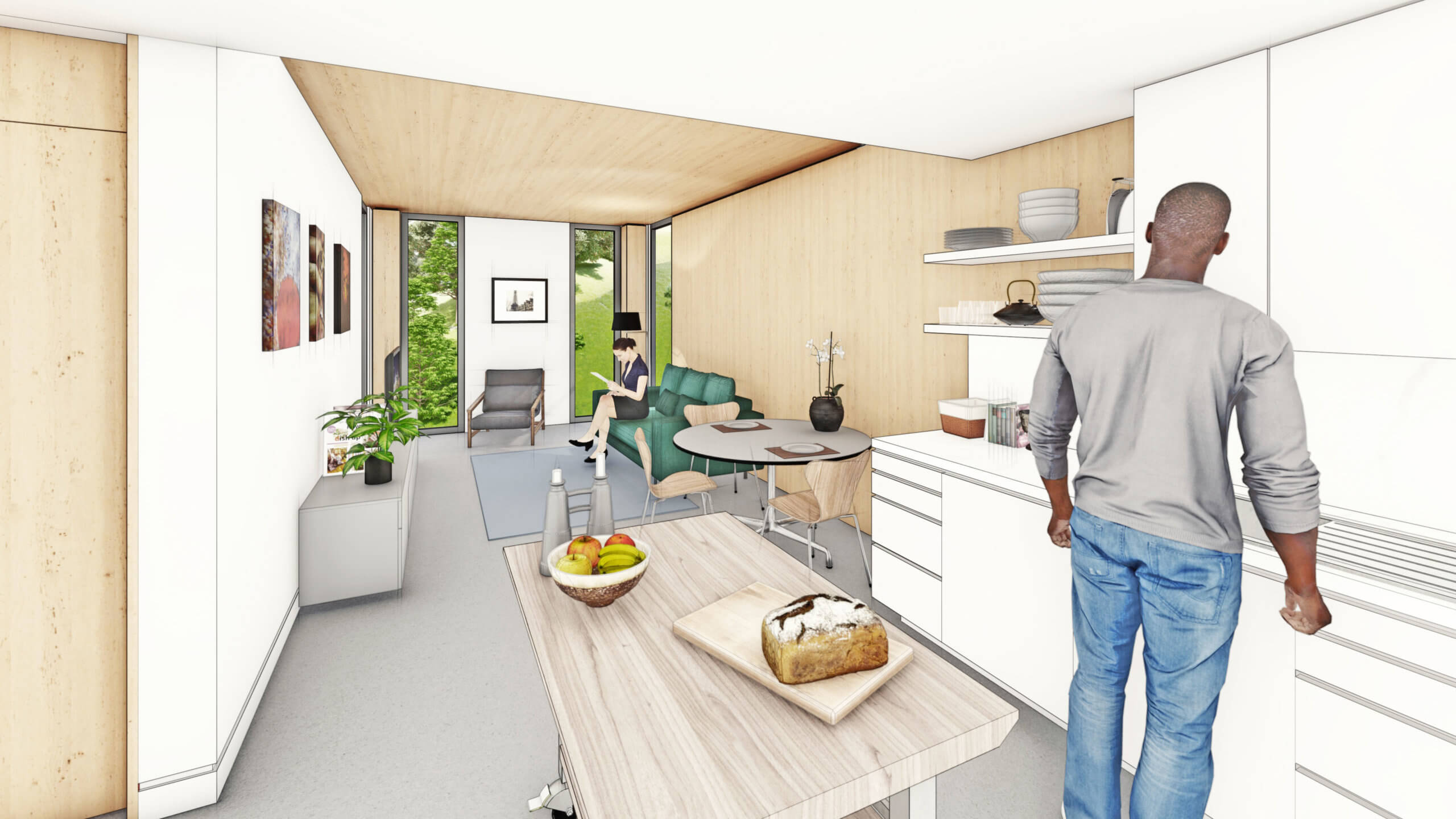Multi-family and student housing are two residential building types particularly well suited to maximizing mass timber’s attributes, a synergy that will help deliver needed housing in a faster and more cost-effective manner and with smaller construction crews. Mass timber, an alternative structural system and framing material to concrete and steel, is relatively new to California and much of the United States, but Europe and Canada have been building with it for decades. Mass timber is made up of massive wood panels, posts, and beams that are comprised of layers of fast-growing soft woods stacked with perpendicular grain directions and glued under pressure or nailed to create members as strong as, and in some cases more resilient than, steel or concrete.
While there are a handful of buildings that have used mass timber in California, the state’s building codes, up until now, heavily restricted the height and size of buildings that could use it. The recent building code updates, which went into enforcement effect on July 1, adopted parts of the International Building Code and expanded the codified acceptable use of mass timber–making the building material available to mid and high-rise multi-family and student housing projects, among others.
The housing crisis continues to rage across California cities. Despite government efforts to streamline approvals, overrule local housing development restrictions, and increase public funding developers can’t build enough housing fast enough to meet the persistent demand. Multi-family housing, especially in dense urban settings, is particularly applicable to mass timber structural frames in that the dimensional modules for the dwelling units align with ideal structural grid spacing and material widths within a mass timber system. Urban sites also tend to have very little lay-down space or site storage for materials, so the appeal of mass timber is that it can be trucked to site and installed off the truck easily when space is tight. Most mass timber structures rely on a system of wood posts (or columns) and panels (or slabs). When examining ideal square footages and layouts for dwelling units, it is often the case that a 12’-0” structural grid aligns with the typical partition and demising of wall locations, allowing the columns to remain clear of the open space within the units. When interior columns are needed, they can fall in an unobtrusive location in the units and can be exposed as an intentional architectural feature.


